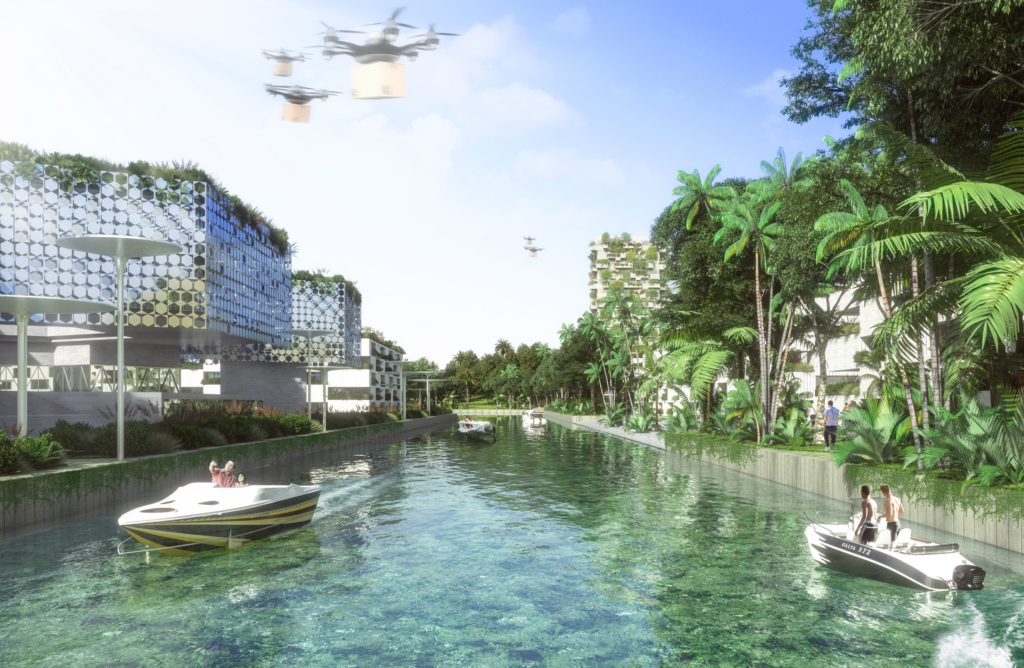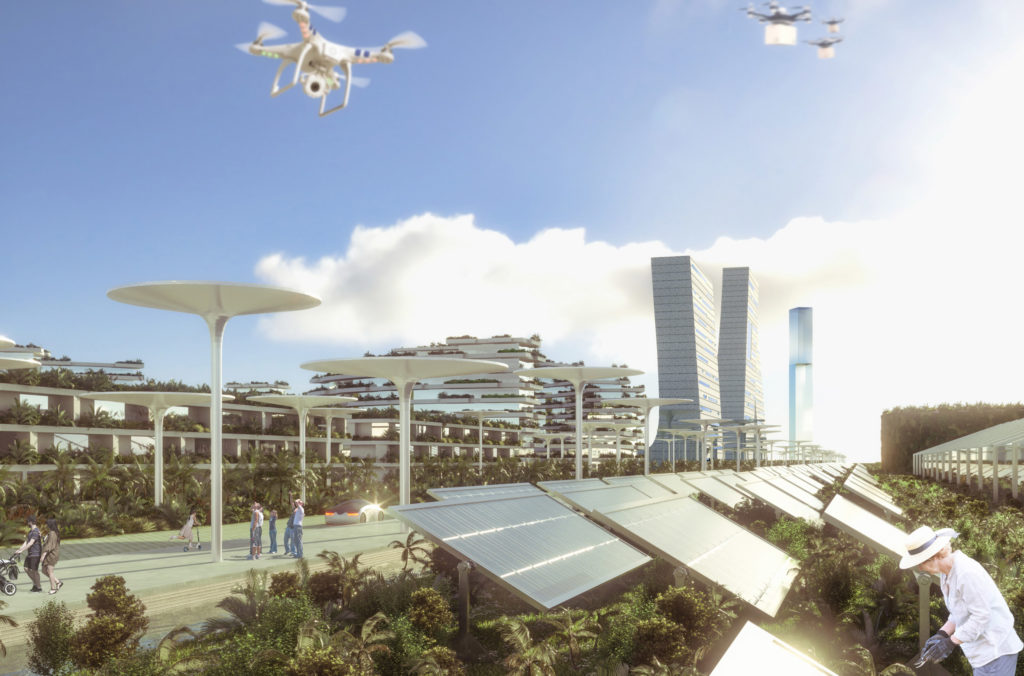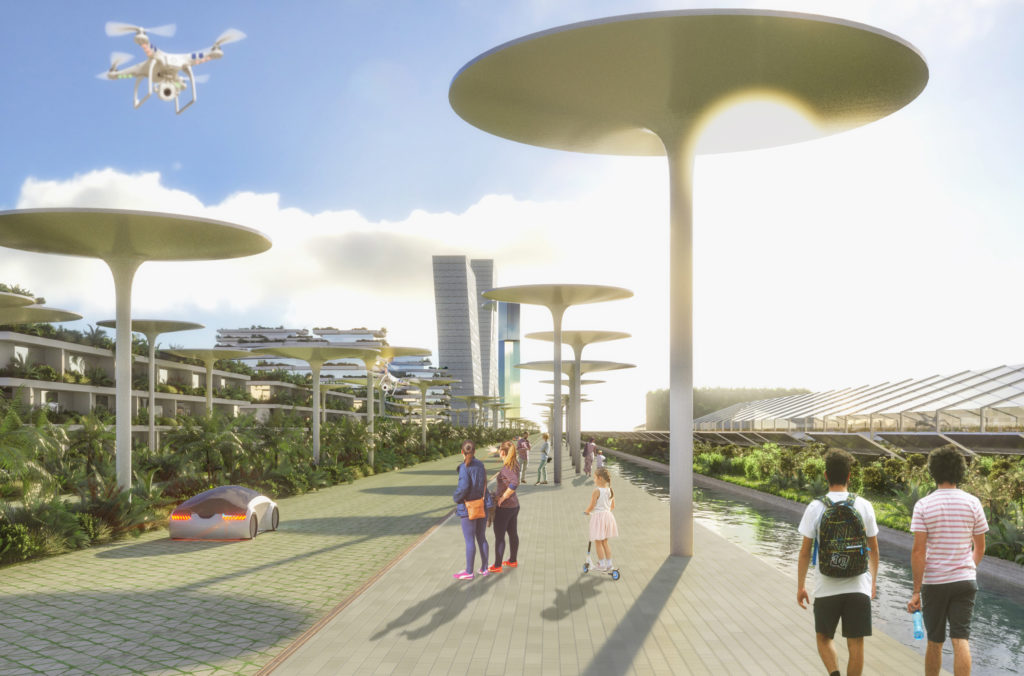
The new city will host, on a land area 557 ha, 130.000 inhabitants, giving back to nature a large area where it would have been built a shopping district. 400 hectares of green spaces with 7.500.000 plants (of 400 different species chosen carefully by Laura Gatti, botanist and landscape architect) 260.000 of which will be trees, 2.3 trees per inhabitant, and the rest composed of shrubs and bushes. Thanks to the new public parks and private gardens, thanks to the green roofs and to the green facades, the areas actually occupied will be given back by nature through a perfect balance between the amount of green areas and building footprint. The Smart Forest City will absorb 116.000 tons of carbon dioxide with 5.800 tons of CO2 stocked per year.

Smart Forest City – Cancun is the first Forest City of the new millennium, an open and international city whose development is focused on technological innovation and environmental quality. A center for advanced research that could hosts all worldwide university departments, international organizations and companies that deal with very important sustainability issues and the future of the planet. New research and development departments are dedicated to welcome researchers and young students from Mexico and from the best academies and universities from all over the world.

Thanks to the contribution of the German
office Transsolar, Smart Forest City –
Cancun is conceived to be completely food and energy
self-sufficient. Surrounded by a ring of solar panels and of agricultural
fields irrigated by a water channel connected with a underwater maritime pipe,
the City will be deeply characterized by full circular economy.
In particular, water is a key element in the project: it is gathered at the
entrance of the City in a huge basin, where there is also a desalination tower,
and it is distributed by a system of navigable canals in the whole settlement
up to the agricultural fields belt that surrounds the urban area. A series of
water gardens are designed to fight floods as a model for resilient landscapes.

This new City is conceived to have a vanguard mobility system: MIC (Mobility in Chain) has proposed an articulated transportation system that allows residents and visitors to leave their vehicles at the edges of the city and rely uniquely on internal electric and semi-automatic mobility.
The urban project of Smart Forest City – Cancun is designed according to Non-Determistic Urbanism. Given the big invariants of urban structure – related to energy infrastructure, mobility and green, to the presence of development and research poles and to the right of each inhabitant to have at its disposal all services at a correct pedestrian and cycling distance – the City grants a great flexibility in the distribution of all different architectural typologies that can be articulated in the five big sectors that the Masterplan defines.